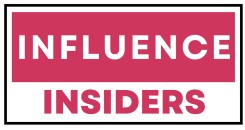The Role of Social Media in Modern Elections
Transforming Political Engagement
In today's interconnected world, social media has revolutionized the landscape of political engagement, providing an unparalleled platform for real-time communication and broad outreach. With millions of users active across various platforms, it has become a pivotal tool for candidates, campaign teams, and political parties. This transformation has far-reaching implications, affecting everything from voter registration to the ability of a candidate to address their constituents during election campaigns.
Social media facilitates direct interaction with the electorate, allowing voters in counties and cities across states, such as California, to engage with their preferred presidential candidates and local officials. On platforms like Twitter, Facebook, and Instagram, potential city council members and senators can broadcast their campaign messages directly to potential voters without the need for traditional media intermediaries. This form of engagement fosters a more personalized interaction, appealing to voters seeking genuine connections with those they intend to vote for.
Moreover, county elections offices and election centers leverage social media to disseminate crucial information about voter registration, early voting, and voting centers. These platforms serve as robust channels for reminders related to ballot submissions and general election days. Through engaging posts and live updates, election offices ensure voters have the information needed for casting ballots effectively and on time.
As political campaigns move forward, understanding the role of platforms in transforming political engagement is essential. Social media not only helps amplify messages but also alters traditional campaign strategies, integrating them with modern tools. This impact is essential for voters and influencers alike in shaping election outcomes and navigating the current political landscape. For a deeper dive into what it takes to be an influencer in this space, discover more here.
Influencers as Key Players in Election Campaigns
The Influential Force of Social Media Personalities in Elections
In today's electoral arena, social media influencers have emerged as significant figures, often shaping the narratives and influencing voters across various platforms. With their broad reach and relatable persona, influencers act as powerful intermediaries between political candidates and the general public.
Influencers use their platforms to share content related to state and county elections, shedding light on the importance of registering to vote, the significance of casting a ballot, and encouraging early voting. They bridge the gap between the electorate and the often confusing maze of election processes, from city council races to presidential campaigns, and beyond.
In a voter landscape where attention span is fleeting, the personable and interactive nature of influencers makes them valued assets. They can drive conversations around key election issues, such as campaign platforms and voter registration, making complex political matters more digestible for their audience. Whether they are focusing on education about local propositions on a particular ballot or promoting early voting, their influence is palpable.
Moreover, influencers often facilitate robust engagement between voters and candidates. By hosting arrow slideshow Q&A sessions, or sharing stories from the general election, they create a dynamic discourse, encouraging their audience to participate fully in the democratic process. Their endorsement of a candidate can sway perceptions and even motivate a change of heart when it comes to voting decisions.
The pivotal role influencers play has become evident through their capacity to mobilize their followers. They have the potential to affect the outcome of elections, ranging from county treasures to senate races. In instances like these, followers view influencers not just as entertainers but credible sources of information, often helping to cut through the noise associated with modern election rhetoric.
In understanding the impact of these personalities, it's worth considering what it takes to be an influencer in this space. To gain further insight into the dynamics of influence, you can explore the detailed perspectives in Understanding the Pulse of Influence: What Does It Take to Be an Influencer.
Challenges of Regulating Social Media Content
Impact of Lack of Regulation in Social Media During Elections
The meteoric rise of social media platforms has dramatically shifted how campaigns are run in cities and counties across states like California. However, with this shift comes the challenging task of regulating content that appears at vote centers during early voting and on election day. Throughout election cycles, candidates and voters alike grapple with an overwhelming influx of information. This rapid dissemination can impact voter registration, cast ballots, and ultimately sway the general election outcomes.
Regulation of social media has been a hot topic discussed by many a campaign strategist. On one hand, allowing freedom breeds creativity and permits influencers to engage authentically with their followers. On the other, unregulated content can lead to misinformation spreading, potentially affecting voter behavior and decision-making not just in the city council races, but up to the secretary of state contests.
- Misinformation: If left unchecked, social media could become a breeding ground for misleading or false information about candidates, election results, and voter registration processes. From the position of a county treasurer to president, every role on the ballot is subject to scrutiny.
- Lack of transparency: As influencers take on key roles, it's crucial they disclose affiliations with specific campaigns or candidates. Transparency is vital to maintain trust, from the state senate elections to the general state ballots.
- Algorithmic influence: Algorithms can inadvertently promote sensational content, leading to an imbalanced representation of candidates' positions. The drive for viral success affects how content circulates and influences voting dynamics.
Understanding the intricacies of these regulatory challenges could potentially guide campaigns in better utilizing their social media strategies, ensuring that their messages reach the electorate through a clear and trustworthy medium. The balance between engagement and authenticity is delicate, as seen in the intriguing hankerson speech at various elections centers, echoing the necessity of ethical considerations. Navigating such intricacies doesn’t just involve understanding handout elections challenges but also emphasizes adapting to elections' ever-evolving digital landscape.
The Power of Viral Content in Shaping Election Outcomes
The Dynamics of Viral Influence on Election Results
In today's digital age, the power of viral content cannot be understated, particularly when it comes to elections. Whether it's a county or state election, content that goes viral has the ability to profoundly impact voting behaviors and election results. Various elements contribute to this phenomenon, making it a formidable tool for rallying supporters or galvanizing opposition.
For instance, when a provocative video of a city council candidate reaches millions of voters via platforms like Twitter or Instagram, it can sway public opinion far more effectively than traditional campaign efforts. The immediacy with which voters in California or any state can engage with and share such content means that what gains traction in one part of the country can quickly influence others. This interconnectedness is a double-edged sword for campaign strategists.
Key Considerations:
- Engagement & Participation: Viral content can increase voter engagement by sparking conversations and debates. Early voting and general election turnout can see spikes following a viral sensation, as seen in the analytics from various elections offices.
- Shift in Perspectives: Videos or posts that trend can challenge perceptions or overcome established narratives, thereby influencing how individuals cast their ballot. Sometimes this results in last-minute shifts that can change entire election outcomes.
- County Elections Impact: The effect of social media is equally pronounced in local elections, where candidates have lesser exposure. Viral content can spotlight issues specific to city residents or even showcase speeches from figures like election dwayne, swaying election-day decisions.
- Content Authenticity: Authentic stories, such as personal tales shared by influential community members via social media, often gain traction. These real experiences resonate, influencing how voters view ballot measures or senate candidates.
- Legal Concerns: With such power at play, regulatory challenges arise. The balance between freedom of speech and misinformation remains controversial and necessitates careful navigation to ensure peaceable and lawful elections.
The impact of viral content is undeniably transformative, reshaping how elections are conducted and perceived. Campaign strategies continue to evolve as they adapt to these digital realities, recognizing the critical role influencers play in swaying voter registration and participation.
Ethical Considerations for Influencers in Political Campaigns
Maintaining Integrity in Political Endorsements
In the dynamic landscape of modern elections, influencers wield considerable power in shaping public opinion and potentially swaying voter decisions. As influencers engage in political campaigns, ethical considerations become paramount. The responsibility to maintain integrity while endorsing candidates or political causes is crucial for preserving trust with their audience.
Transparency and Disclosure
One of the foremost ethical considerations is transparency. Influencers must clearly disclose any partnerships or sponsorships with political candidates or parties. This transparency is not only a legal requirement in many jurisdictions but also a fundamental aspect of maintaining credibility. For instance, when endorsing a candidate for a county election or promoting early voting initiatives, influencers should be upfront about their affiliations.
Avoiding Misinformation
In the age of viral content, the rapid spread of misinformation poses a significant challenge. Influencers have a duty to verify the accuracy of the information they share, particularly when it pertains to critical topics such as voter registration deadlines or the location of vote centers. Sharing inaccurate information can lead to voter confusion and potentially impact election outcomes.
Balancing Personal Beliefs and Audience Expectations
Influencers often face the dilemma of balancing their personal beliefs with the expectations of their diverse audience. While it is essential for influencers to express their views authentically, they must also consider the potential impact on their followers. For example, an influencer in California discussing a city council election should be mindful of the varied perspectives within their audience.
Respecting Diverse Opinions
Political campaigns can be polarizing, and influencers should strive to foster respectful dialogue. Encouraging open discussions and acknowledging differing viewpoints can enhance the quality of public discourse. By promoting respectful interactions, influencers contribute positively to the democratic process, whether it's a general election or a specific campaign for a state senate position.
As influencers continue to play a pivotal role in election campaigns, navigating these ethical considerations is essential for maintaining their influence and credibility. By prioritizing transparency, accuracy, and respect, influencers can effectively contribute to the democratic process while preserving the trust of their audience.
Strategies for Effective Social Media Campaigns in Elections
Crafting Impactful Campaigns on Social Media
In the vast landscape of modern elections, social media campaigns must be strategically planned to amplify the message of any candidate effectively. This section delves into key strategies that county elections and state campaigns should consider to engage voters and influence election outcomes. To resonate positively with the voter base, candidates should:- Understand Their Audience: Candidates should have a thorough understanding of their potential voters, whether they are in a city, county, or state level election. By analyzing demographics, behavior, and preferences, campaigns can tailor content that appeals directly to their audience, making it more likely for voters to engage and eventually cast their ballot.
- Utilize Multiplatform Approach: Different social media platforms offer unique advantages. By leveraging a multiplatform approach, candidates can maximize their reach, tailoring specific content for Facebook, Twitter, Instagram, and other channels where voter registration and engagement may occur. This comprehensive strategy can boost the chances of success on election day.
- Engage with Authenticity: Authenticity is key as voters are more likely to trust a candidate who comes across as genuine. Emphasizing transparency in communications about political stances and plans—for instance, the agenda of a city council proposal or the budget plans of a treasurer—can foster trust and improve voter relations.
- Enable Two-Way Communication: Encourage dialogue through comments or live sessions, enabling voters to ask questions about the candidate's platform or policies related to the general election. Engagement in these discussions can bridge the gap between voters and politicians, building a more personal connection.
- Monitor and Adapt: Social media is dynamic, with trends and public sentiment shifting frequently. By closely monitoring campaign impact through analytics, candidates can adapt their strategies in real-time, responding to issues raised by their constituents or pivoting campaigns to address emerging topics, such as early voting or vote centers.










